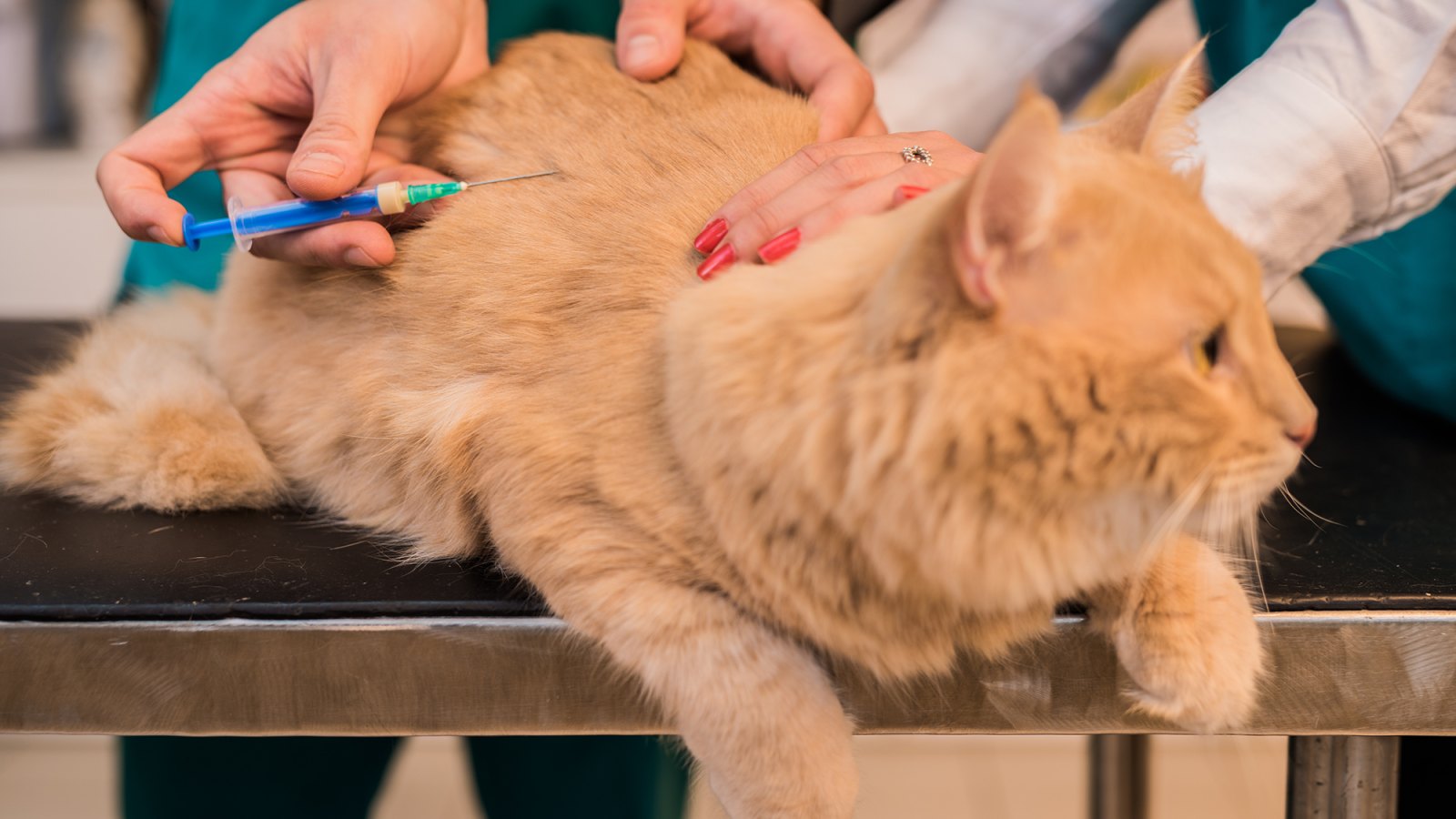Rabies — it’s something you only see in horror movies and Stephen King novels, right? With 5,508 reported cases of animal rabies in 2015, according to the CDC, that actually couldn’t be farther from the truth. Rabies is a real threat to you and your pets, one that you need to protect against.
“While rabies cases in domestic animals are relatively rare, this is in most part due to vaccination laws, not lack of exposure,” Dr. Mark Verdino, senior vice president and chief of veterinary staff for North Shore Animal League America, tells Us Weekly. “There are still thousands of animal [rabies] cases in the U.S. each year, with hundreds in pets. It has been documented in all 50 states. Without active vaccination programs, the cases would undoubtedly be substantially higher.”
If you’re a diligent pet owner who keeps up with vaccinations, give yourself a high-five. If your modus operandi is exactly the opposite, consider stepping things up just in time for World Rabies Day (September 28).
Read on for some pretty horrifying facts about rabies from North Shore Animal League America and tips for the single best way to make sure you and your pet never get it. (Hint: It’s spelled V-A-C-C-I-N-A-T-E!)
1. Rabies is fatal but totally preventable.
Unvaccinated animals can face a sad, sad fate. The infectious viral disease, transmitted through bodily fluids of an infected animal, is almost always fatal following the onset of clinical symptoms. Symptoms include fevers, seizures, and paralysis.
2. Animal bites aren’t the only way to contract rabies.
The most common route of transmission of rabies is via an animal bite, but here’s something even more terrifying: It may also be contracted when an animal eats an infected animal. So top tip: Steer clear of dead animals outside and on walks!
3. Symptoms of rabies don’t always surface right away.
Verdino says it can take up to six months after exposure to rabies for an animal to develop clinical signs — think about that. That means your pet could be bitten without your knowledge and you wouldn’t know for months that he or she has the disease. All the more reason to vaccinate.
4. Rabies vaccines are, well, dead.
If you’ve ever wondered if a vaccine could actually give your pet rabies, that’s just crazy talk. Verdino explains that rabies vaccines are not live, meaning there is no chance the vaccine will give your pet rabies. So, you know what to do: Schedule that vet appointment.
5. In 2015, bats were the most common source of rabies infection to humans.
Insert OMG emoji here. And, from this point forward, all fears of vampires are hereby justified. In order of prevalence, the most common documented cases of rabies in the United States are in bats, raccoons, skunks, foxes, cats, cattle and dogs, Verdino confirms.
6. If your pet gives rabies to other animals or people, you could be liable.
Check with your local government website for info, but you should know that most municipalities require proof of rabies vaccination — and for good reason: They want everyone (innocent people and pets included) to be safe! Verdino says the owner of an unvaccinated or under-vaccinated animal may be liable for treatment and or quarantine costs for the animal and/or person bitten. Ouch all around.
7. Some people don’t keep up with vaccinations.
There is nothing more scary than that right there. The single best way to protect you and your pet is to keep up with regular vaccinations (they begin at 12-16 weeks of age and then every 1 to 3 years after that). If you can protect your pet from dying from a bite or euthanasia because of contracting rabies, and also protect others from being bitten and infected with the fatal disease, you MUST do it. There is simply no excuse.
More things you can do to avoid exposure to rabies:
- Avoid exposure to wildlife and unvaccinated domestic animals.
- If you see an animal acting erratically, report it to animal control.
- If you think your pet has been exposed to rabies, bring your pet to a vet immediately.
- If your pet has found a dead animal, carefully (without handling it directly) place the carcass of the animal in a receptacle so it can be tested by local authorities.
Us Weekly articles and content are for informational purposes only. Nothing contained in Us Weekly articles and/or content is or should be considered, or used as a substitute for, veterinary or professional advice, diagnosis or treatment. If you believe your pet may have a medical emergency, call or visit your veterinarian or your local veterinary emergency hospital immediately.


